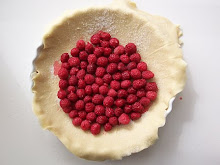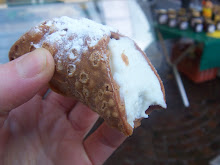
Several weeks ago I spent the day in East Jerusalem with Rafram. It wasn’t the Jerusalem I know and am familiar with but an undiscovered one; A Jerusalem that exists side by side the city I know and remember growing up in, the eastern side of Jerusalem is the Palestinian side. It is on this side wild herbs are sold by women kneeling down on the floor, where the sweetest confectionary is sold as a main course, hummus is prepared for breakfast and seasoned with the unique taste of time and tradition. Here the coffee beans are freshly ground mixed with cardamon seeds, okra is sold wild and tomatoes are detected from a far by their scent.
The Palestinian farmers grow their produce using traditional methods and heirloom varieties for lack of better means, meaning that produce is seasonal and still bears the scent and taste of how it never does anymore.
Thanks to Rafram I was introduced to a whole new world of foodstuffs that were unknown to me and still are to those that aren't obsessed with the local foodscape of Israel. Nothing new and innovative, these ingredients are local and seasonal and have been grown, made and produced using the same methods for centuries. I returned home that day on a full stomach after a lunch of fried brains and livers seasoned with the most delicate of seasoning, naturally served with a creamy sheep’s milk Labneh, a crispy salad dressed with tahini and the fluffiest of pita breads. Lunch was followed by a visit to my new favorite food shop somewhere on the east side of the city. Here, buttery potatoes are sold covered in soil, as they were picked and the clementines are still adorned with the stem, as they were picked off the tree. A bit of both, I also added the sheep’s milk clarified butter, unfiltered young olive oil, bitter and pungent from the recent harvest as well as the elusive thick, gooey ‘honey’ syrup made from grapes in Hebron.
Whilst it is always exciting to discover new treasures just when you thought you knew it all, the down side is the realization of how little one really knows. Nothing short of gems, these treasures are little known to the Israeli population and that may not be a bad thing considering previous examples of local dishes and ingredients ‘adopted’ by the Israeli palette, quickly followed by progress and industrialization.
Sold in recycled jars and plastic bottles, these products have changed little over time and have evolved over centuries, in harmony and keeping with the seasons, the land and nature. Perhaps they should remain a secret, now that they are gracing my kitchen.

These could be made using yeast dough or phyllo sheets, either fried or baked.
I chose the fast track and the crispiness of baked phyllo pastry sheets. Having tasted the end product, I suggest you do the same.
Fried onion & chickpeas sambusac
Ingredients
Makes about 15 sambusacs
Phyllo sheets, thawed overnight in the fridge, if using the frozen kind
1 cup chickpeas, soaked overnight, drained and cooked in water until tender.
½ cup red lentils, fried in oil until crispy (optional)
Olive oil
1-2 onions, chopped
2 garlic cloves, minced
½ chilli pepper, finely chopped
½ lemon, squeezed
Sea salt, to taste
Freshly ground pepper, to taste
1 egg yolk
2-3 Tbs sesame seeds
Prepare the filling:
Heat a frying pan over medium heat. Add a little olive oil.
When the oil is hot add the chopped onions and cook until golden, about 10 minutes.
Add the minced garlic and chopped chilli and cook for a few more minutes. Remove from the heat and set aside.
Using either a food processor or a mortar and pestle mash the drained cooked chickpeas to a course paste.
In a medium bowl combine the chickpea paste with the cooked onions, garlic and chilli. Add the fried lentils, if using.
Season with salt, pepper, lemon juice and a drizzle of olive oil.
Preheat the oven to 190°C.
Prepare the phyllo pastry:
Using a sharp knife, cut the phyllo into 15 strips (or as many sambusacs you wish to prepare), about 8x25 cm. stack the strips, cover with plastic wrap and a damp kitchen towel.
If you let the dough dry out, it will crack and be difficult to work with.
Put the olive oil in a small bowl and clear an area on your counter to work with the phyllo dough.
Keeping remaining phyllo covered and working quickly, place 1 sheet on work surface and lay it flat.
Gently brush with some olive oil.
Filling and folding the sambusac:
This clip demonstrates how to fold the phyllo into a triangle and create a pocket in which to drop the filling.
Alternatively, Fold the corner of phyllo over to enclose filling and form a triangle.
Continue folding the pastry strip, maintaining a triangle shape.
Place the sambusac, seam side down, on baking sheet.
Repeat with remaining phyllo and filling.
Generously brush the samusacs with egg yolk and sprinkle with sesame seeds.
Bake until golden and crisp all over, about 25 minutes total. Cool slightly. Serve warm or at room temperature.









No comments:
Post a Comment